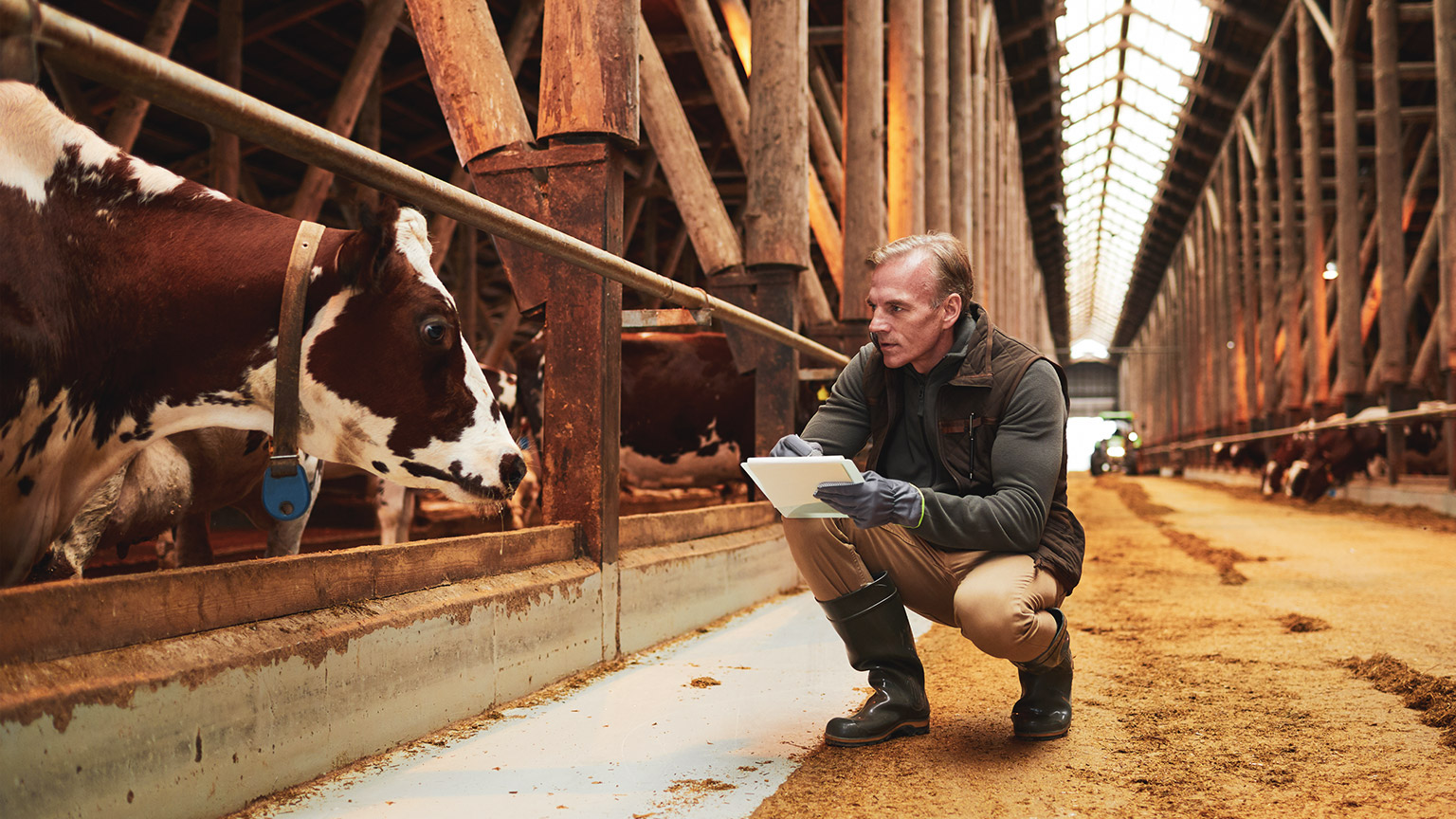As you will have come to learn, several reporting procedures are in place for safety, management, care with handling and communication. In addition to these, there are also procedures for reporting:
- Environmental hazards
- Potential and actual breaches of environmental legislation.
Below is an example from the Happy Paws Animal Care Facilities Reporting Policy.
Case Study
At Happy Paws, clear and consistent reporting is essential for maintaining the highest care, safety, and compliance standards. Here's a quick overview of our key reporting guidelines:
1. Incident Reporting:
- What to Report: Any accidents, injuries (to animals and staff), or unusual behaviours should be reported immediately.
- How to Report: Use the Incident Report Form available at the front desk or via our internal system. Submit to your supervisor within 24 hours of the incident.
- Why It's Important: Timely reporting ensures that necessary medical attention can be provided and preventive measures can be taken to avoid future incidents.
2. Daily Care Logs:
- What to Report: Record daily care activities such as feeding, cleaning, medication administration, and any notable observations (e.g., changes in appetite, mood, or behaviour).
- How to Report: Use the Daily Care Logbook or the digital entry system. Make entries at the end of each shift.
- Why It's Important: Consistent logging helps track the health and well-being of each animal, ensuring they receive the best possible care.
3. Maintenance and Safety Issues:
- What to Report: Any equipment malfunctions, facility damage, or safety hazards (e.g., broken fences or electrical issues) should be reported immediately.
- How to Report: Use the Maintenance Request Form or notify the maintenance team directly. Ensure your supervisor is informed.
- Why It's Important: Prompt reporting of maintenance and safety issues prevents accidents and ensures a safe environment for both animals and staff.
4. Compliance Reporting:
- What to Report: Any non-compliance with regulatory standards, internal policies, or ethical guidelines should be reported.
- How to Report: Use the Compliance Reporting Form or contact the compliance officer directly. Reports can be made anonymously if preferred.
- Why It's Important: Upholding legal and ethical standards is crucial for our facility's reputation and operations.
5. Financial and Resource Reporting:
- What to Report: Record and report any financial transactions, including purchases, donations, and budget expenditures.
- How to Report: Use the Financial Reporting Template and submit it to the finance department monthly.
- Why It's Important: Accurate financial reporting ensures transparency and helps manage resources effectively.
Happy Paws ensures a safe, compliant, and caring environment for all animals and staff by adhering to these reporting guidelines.

Reporting is an important part of working in the animal care industry. Reports are in place to refer to later to ensure quality improvement at the practice, document any injuries, and ensure the clinic or practice is operating in accordance with the company policies, procedures, regulations and legislation. All reports must follow a procedure outlining the details relevant to breaches or incidents and must be documented. Verbal reports, while good to make as they unfold, should always be supported by written documentation.
If you know, there is an environmental hazard or a problem with the work you're assigned to do, or if you notice something wrong that could have an environmental impact, you have a legal duty to tell your supervisor. To avoid an incident or to mitigate an issue, talk to your supervisor immediately. There are specific reporting procedures for environmental and resource hazards and risks that your workplace will have.
Examine the Environmental & Reportable Incident / Non-compliance Reporting Form from the Government of Western Australia to get a feel for what you might find in your workplace. Following is a scenario to give an idea of what may need reporting in the animal care workplace.
Consider the following scenario

Mark has been working at a veterinary practice for six months and has only been in the industry for about a year. He works with a large team of veterinarians, vet nurses and other staff training in the field. One morning, he notices another staff member throwing a syringe into the general waste bin rather than the sharps container, upon seeing this, he quickly picked up the syringe and put it in the correct bin. Mark did not report this to anyone, as he had dealt with it immediately. He also felt uncomfortable confronting his colleague who has only been working briefly.
A few weeks later, at the end of the day, Mark, his co-worker Ivana and the veterinarian Jesse were cleaning up at the end of the day. Ivana was emptying one of the bins in the treatment room when something sharp pierced her right index finger through the plastic bag and her glove. Opening the bag to see what it was, there was yet another syringe in the rubbish instead of the waste container. Ivana cleaned and washed the affected area and applied an antiseptic cream and a band-aid. Ivana notified Jesse immediately, asking if anyone had noticed this before. Mark admitted he saw a staff member disposing of a syringe in the bin but did not want to overstep his place by confronting the individual or reporting it to management.
Jesse explained that as this is a breach of waste disposal procedures, resulting in a safety risk, incidents like these must be reported as soon as they happen.
In the previous scenario, a report was not made immediately after the occurrence of the waste disposal breach and as a result, another staff member was injured. There may be situations in the clinic or practice where errors are made with waste disposal. Some of these can have minor implications, while others can cause more environmental harm. Regardless of the severity of the hazard, they need to be reported to prevent them from escalating at a later time.
Keeping a record of when these situations arise ensures they can be prevented later and quality improvement can occur. The workplace will have a policy and procedure for the reporting process, and usually, there will be an environmental hazard report that you can complete and submit to your supervisor. No matter your level of experience or how long you have been working there, it is important you understand you also have a responsibility to make reports where necessary.
If you have witnessed a breach of environmental practices, it is up to you to not only raise the issue, but it is also your responsibility to follow up on the report and ensure the reported problem has been fixed. If it has not been remedied in a reasonable amount of time you should take this issue further and report to a higher level. If the problem is extreme, then you should cease the relevant task. If your employer takes no action, there are ways that you can report it outside the business. For example, contact your local environmental protection agency.
Breaches on Environmental/Resource Hazard
When managing an animal care facility, breaches related to environmental and resource hazards can lead to health risks for animals and staff and potential legal and environmental issues. Here are examples of such breaches:
1. Incorrect Waste Disposal
- Example: General waste, such as used bedding or faecal matter, is disposed of in regular trash bins instead of designated biohazards or waste bins.
- Consequence: This can lead to contamination, the spread of infectious diseases, and the attraction of pests such as rodents or insects, which may harm both animals and staff.
- Solution: Implement clear guidelines and provide separate, labelled bins for biohazardous waste, general waste, and recycling to ensure proper disposal.
2. Incorrect Chemical Disposal
- Example: Disinfectants and cleaning chemicals used in the facility are poured down regular drains without proper treatment or neutralization.
- Consequence: These chemicals can contaminate water supplies, damage plumbing systems, and harm local wildlife and ecosystems.
- Solution: Follow environmental regulations for the disposal of hazardous materials, including using designated hazardous waste containers and consulting local disposal guidelines for safe chemical disposal.
3. Incorrect Disposal of Deceased Animals
- Example: A deceased animal is placed in a regular trash bag and disposed of in the general waste bin instead of following proper protocols for biological waste.
- Consequence: This improper disposal can result in the spread of diseases, contamination of waste streams, and environmental damage, as well as breach of regulatory and ethical guidelines.
- Solution: Establish protocols for properly handling deceased animals, such as using designated bags or containers and arranging for cremation or disposal services in compliance with local health regulations.
Reporting procedures
When making a written report, you must consider the details that are required to make the report. These documents are legally binding, therefore care needs to be taken when they are made and as much detail as possible needs to be included. The report is often kept for several years after it has been made.
The following table outlines the details required in the report. You will also find an example of each detail and how to use it in the relevant context. For the purposes of this table, the previous scenario has been used to create examples.
| Details required | Example |
|---|---|
| Date and time |
The date and time of the incident must be recorded. For example: Date and time of the incident: 20/04/21 at 5.30 pm. |
| Who is reporting? |
The ‘who refers to the person who is making the report. This person must ensure they have filled out the appropriate report details and should have eye-witnessed the incident if it did not happen directly to them. In the scenario involving incorrect syringe disposal, Ivana would be the person making the report, as this incident happened to her. |
| What happened? |
This part of the report involves the most detail. These details recount the incident, including What happened, how it happened and who it happened to. For example: As I was emptying the bin, my right index finger was pierced through the bin liner and the glove with a sharp object, causing it to bleed. When looking at the source, I saw that it was a syringe that had been incorrectly disposed of. |
| Witnesses |
The details of anyone who was present at the time of the incident need to be included. In this case, Mark’s details would need to be included on the report as a witness to the incident. |
| Corrective action |
This part of the report includes the details of what action was taken in response to the incident. For example: I applied first aid by washing, cleaning the wound, and applying antiseptic cream and a band-aid. I then notified Jesse (the VET) to inform him of the incident, including the incorrect disposal of the syringe. |
| Follow up |
The follow-up details of the report include the actions that were taken in response and if any further first aid was required including the need for medical or hospitalisation. For example: I consulted with my doctor regarding the syringe. Jesse also consulted with the team regarding the correct disposal of syringes. Additional staff training may need to be considered when disposing of hazardous materials. |
| Signature | The person completing the report must sign it in the stipulated space to confirm their witness to the incident and any follow-up action taken. |
The next case study provides an example of the Reporting processes at Happy Paws Animal Care Facility.
Case Study
Happy Paws Animal Care Facility Reporting guidelines
| 1: Incident Reporting | Step 1: Incident Occurs Step 2: Fill out the Incident Report Form (Digital or Paper) Step 3: Submit to the Supervisor Step 4: Supervisor Reviews and Logs Incident Step 5: Corrective Actions Implemented (if needed) Step 6: Incident Closed or Escalated to Management (if necessary) |
| 2: Daily Care Log | Step 1: Complete Daily Care Activities (Feeding, Cleaning, etc.) Step 2: Record Observations in the Daily Care Logbook/Digital System Step 3: Supervisor Reviews Logs at End of Shift Step 4: Address Any Noted Issues (Health, Behavior, etc.) |
| 3: Maintenence and Safety Issues | Step 1: Identify Maintenance/Safety Issue Step 2: Fill out the Maintenance Request Form Step 3: Submit to the Maintenance Team and Notify the Supervisor Step 4: Maintenance Team Assesses and Fixes Issue Step 5: Supervisor Confirms Issue Resolved Step 6: Log Issue and Resolution |
| 4:Compliance Reporting | Step 1: Identify Non-Compliance Issue Step 2: Fill out Compliance Reporting Form (Optional: Anonymity) Step 3: Submit to the Compliance Officer Step 4: Compliance Officer Investigates Step 5: Implement Corrective Measures (if necessary) Step 6: Record Outcome in Compliance Log |
| 5: Financial and Resource Reporting | Step 1: Record Financial Transaction/Resource Use Step 2: Fill out the Financial Reporting Template Step 3: Submit Monthly Report to Finance Department Step 4: Finance Department Reviews and Logs Report Step 5: Reconciliation and Budget Adjustments (if needed) |
Reporting Hazards
In the animal care industry, reporting environmental and resource hazards is crucial for maintaining a safe and sustainable environment for animals and staff. Here are 10 circumstances where a report should be made:
- Water Contamination: If water sources (for drinking, cleaning, or bathing) are suspected to be contaminated with chemicals, pathogens, or other pollutants.
- Chemical Spills: When hazardous chemicals, such as cleaning agents or disinfectants, are spilled and could potentially harm animals, staff, or the environment.
- Waste Disposal Issues: When animal waste, hazardous waste, or medical waste is not being disposed of properly, leading to potential contamination or health risks.
- Air Quality Concerns: If there are high levels of dust, fumes, or other airborne pollutants, that could affect the respiratory health of animals or staff.
- Noise Pollution: When noise levels exceed safe limits, potentially causing stress or harm to animals and staff.
- Pest Infestation: If there is an infestation of pests (such as rodents or insects) that could pose a health risk or contribute to the spread of disease.
- Uncontrolled Runoff: When there is runoff from animal enclosures, waste areas, or chemical storage that could contaminate local water sources or soil.
- Excessive Resource Use: If there is excessive use of resources, such as water or energy, that could lead to environmental harm or inefficiency in operations.
- Improper Storage of Hazardous Materials: When chemicals, fuels, or other hazardous materials are not stored correctly, increasing the risk of leaks, spills, or fires.
- Animal Carcass Disposal Issues: If deceased animals are not being handled and disposed of in a safe and environmentally responsible manner, leading to potential health hazards or contamination.

Workplaces will create procedures to ensure they are complying with legal requirements that concern the environment. Procedures include information regarding areas such as how to identify and report hazards, potential breaches and breaches of relevant environmental legislation that are observed in daily work.
If you witness any breaches of environmental regulations, immediately notify your supervisor. Your supervisor will then follow procedures to report the breach.
The procedure that your supervisor follows will usually be conducted in this order:
- Locate the report for the environmental hazard or breach
- Create a report documenting the details of the environmental hazard or breach
- Identify the actions to be taken to remedy or impede it
- Submit report according to workplace policy.

The Department of Climate Change, Energy, the Environment and Water outlines the following areas where perceived breaches of legislation are reportable:
- hazardous waste
- Heritage sites
- international wildlife trade
- land clearing
- ozone
- sea dumping
- threatened ecological community or species
- underwater heritage sites
- illegal logging.
The severity of the breach will determine how extensive the documentation will need to be.
There may be situations, however, when your report is not being taken seriously or ignored by your supervisor and you will have to report this to the next level up in management.
Aside from upper management, you could contact your local environmental protection agency, which will guide you through the reporting process, or you can report a perceived breach of environmental law at a federal level with the Australian Government Department of Climate Change, Energy, the Environment and Water. The online form will walk you through each step of making a report on a serious environmental breach.
Knowledge Check
Complete the following questions.
The following list provides you with some additional information you may wish to refer to when it comes to environmental sustainability. It is a good idea to sign up or subscribe to relevant industry newsletters that will encourage your participation in relevant sustainability practices.
- Australian Government Department of Climate Change, Energy, the Environment and Water
This resource provides you with a range of information, including about biodiversity and climate change, as well as links and instructions for reporting breaches. This website has been founded by the Australian Government with authentic, reliable, and up to date information pertaining to sustainability. - RSPCA Queensland
This article, written on behalf of the RSPCA in Queensland, discusses the importance of merging sustainable practice with animal welfare. The team at the RSPCA has teamed up with the Recollect App to create a resource to achieve environmental sustainability and animal rescues. - RSPCA New South Wales
This resource provides you with an environmental plan implemented by the RSPCA in NSW. The article provides a scope of the movement towards sustainability and reduction of the carbon footprint. - NSW Department of Planning, Industry and Environment
This website provides a range of e-newsletters you can sign up for to keep up to date with current trends, changes, and news within the animal care environment. Many of these e-newsletters range from living museums to Tooronga Zoo conservation and helping our koalas.
